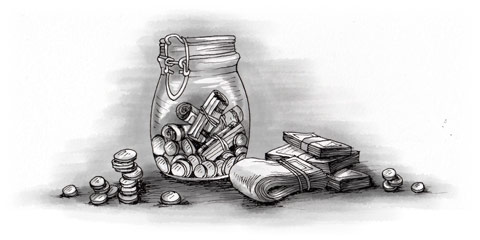In the long-term you probably can’t survive in Canada without a bank account. Most importantly, you will probably need one in order to receive your salary. You will also probably need to open a bank account in order to rent or buy accommodation, pay for gas and electricity, getting a phone line, and many other necessities.
How safe are Canadian Banks?
The Canada Deposit Insurance Corporation (CDIC) is a federal Crown Corporation created in 1967 to provide deposit insurance and contribute to the stability of Canada's financial system. In Canada, all banking institutions members of the CDIC guarantee savings deposits for up to CAD$60,000 per depositor.
Choosing a bank
Having chosen which bank you wish to use, make your way to one of their branches and tell them which kind of account you would like to open. You should be able to provide two government issued pieces of identification (e.g. a passport, driver’s license, Provincial Health Card, Social Insurance Card) and proof of address (usually requested in the form of a utility bill). As a foreign resident you will usually also be asked to provide a reference from your employer/host university or educational institution or your previous bank.
When choosing a bank, take into consideration how far it is the branch to the place where you live/work, or any special package that your employer/university may have in order to minimize your banking fees.
The biggest Canadian banks are:
- Royal Bank of Canada (www.royalbank.com )
- TD Canada Trust (www.tdcanadatrust.com )
- Canadian Imperial Bank of Commerce (www.cibc.com )
- Bank of Nova Scotia (www.scotiabank.com )
- Bank of Montreal (www.bmo.com )
All the banks listed above have offices in most Canadian cities. There are also many regional banks, credit unions, and international banks such as HSBC, Citibank, ING Bank, UBS, etc.



